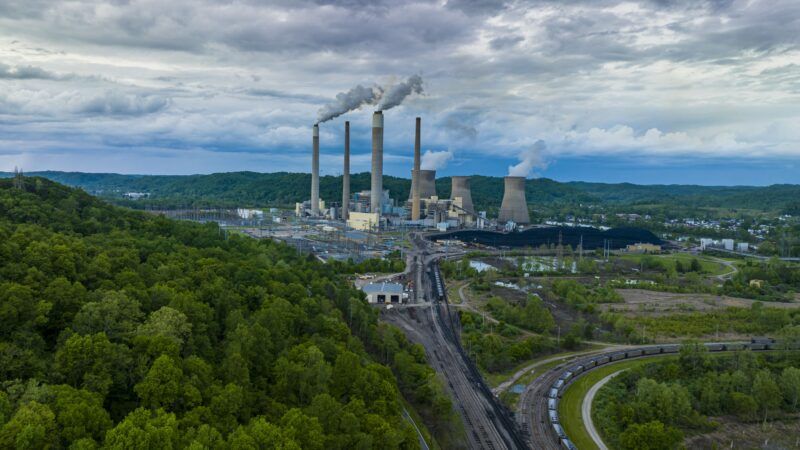EPA Agrees To Reduce Federal Regulatory Authority in West Virginia
Giving more power to states is good for the environment.

This week, Environmental Protection Agency (EPA) Administrator Lee Zeldin approved West Virginia's bid to regulate Class VI carbon dioxide (CO2) storage wells in the state. The United States is a global leader in energy production and emissions reduction. This announcement will allow it to continue its leadership in both.
Class VI injection wells were established in 2010 by the EPA to store carbon dioxide in deep rock formations more than a mile underground and well below the water table. The agency also regulates five other classes of underground injection wells that are not as deep (but still deep enough to protect public health) including those that store industrial waste, fluids from mining operations, and radioactive waste.
The emissions reduction potential from Class VI storage is potentially enormous; the Department of Energy estimates the country's geological storage capacity ranges from 2.2 trillion metric tons of CO2 to 21.2 trillion metric tons of CO2. For context, the U.S. emitted a little more than 4.8 billion metric tons of CO2 in 2023. Commercial-scale geological storage is also safe and has been around for nearly 30 years in other countries with a remarkable safety record.
Despite these benefits, government inefficiencies and years-long permitting timelines have hamstrung the establishment of Class VI wells in the United States. Since their inception in 2010, the EPA has permitted the construction of only eight Class VI wells. Only two of these have actually injected CO2 underground.
Even though the EPA received more than $48 million from the 2021 Bipartisan Infrastructure Law to facilitate grants to states establishing Class VI programs, and an additional $25 million from the same bill for program administration, the agency still faces a permitting backlog for these projects. The EPA is currently reviewing 56 projects, representing 161 wells. Several of these applications have not been completed within the agency's goal of 24 months.
To circumvent the federal regulatory labyrinth, the EPA allows states to apply for primacy to permit and regulate injection wells within their respective borders. To date, four states—North Dakota, Wyoming, Louisiana, and now West Virginia—have been given this authority.
Primacy shrinks the size of the federal government in state operations (the EPA still retains oversight authority over all state injection wells) which in turn gets projects up and running faster. North Dakota, for instance, permitted and approved its first Class VI well within eight months of receiving primacy in 2018. Together, North Dakota and Wyoming—which was granted primacy in 2020—have issued permits for 18 injection wells. Louisiana has had primacy since 2023 and is currently reviewing more than 80 Class VI applications.
With primacy in hand, West Virginia is well-positioned to advance underground carbon storage projects. Fidelis New Energy has plans to build a hydrogen fuel production facility coupled with underground CO2 storage in Marshall County, West Virginia, and Tri-State CCS is exploring geological carbon storage in three of the state's counties. Advanced Resources International, which is the recipient of federal funding, has also announced plans to develop a Class VI well in Marshall County.
Primacy returns power to states, which are better positioned than federal agencies to meet and respond to the environmental needs of their communities. The EPA should recognize this and rescind its regulatory overreach to bring more environmentally beneficial projects online.
Show Comments (21)